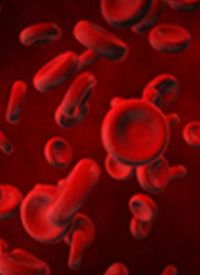Article
Revumenib Drives Durable CR/CRh Rates in KMT2A-rearranged and NMP1-mutant AML
Author(s):
Revumenib resulted in deep response rates, facilitating subsequent transplant in patients with KMT2A-rearranged or NMP1-mutant, relapsed/refractory acute myeloid leukemia.

Revumenib (SNDX-5613) resulted in deep response rates, facilitating subsequent transplant in patients with KMT2A-rearranged or NMP1-mutant, relapsed/refractory acute myeloid leukemia (AML), according to updated findings from the phase 1 portion of the AUGMENT-101 study (NCT04065399) presented at the 2022 ASH Annual Meeting.
The results indicated that 30% (n = 18) of evaluable patients (n = 60) achieved complete response (CR)/CR with partial hematologic recovery (CRh). The median duration of CR/CRh was 9.1 months (n = 18; 95% CI, 2.7-not reached) and 78% of patients achieved minimal residual disease (MRD) negativity.
“Revumenib resulted in durable responses in heavily pretreated patients with relapsed/refractory KMT2A- and NPM1-mutant disease, and demonstrated a clinically manageable safety profile,” the study authors wrote in the presentation.
Revumenib is a potent, selective menin-KMT2A interaction inhibitor that acts by competitively binding a groove within menin, disassembling abnormal transcription complexes in KMT2A-rearranged, NPM1-mutant, and other leukemia subtypes.
The study enrolled adult and pediatric patients with relapsed/refractory KMT2A-rearranged or NMP1-mutant AML.
Revumenib was given orally in 12-hour increments every 28 days, and accelerated titration into a rolling 6 design was used, wherein patients in arm A received 113 mg, 226 mg, 339 mg, and 276 mg of revumenib, and those in arm B received 113 mg, 226 mg, and 163 mg.
The primary objective was to define the safety, tolerability, and recommended phase 2 dose (RP2D) of the agent.
To qualify for the RP2D, no more than 1 of 6 evaluable patients could experience a dose-limiting toxicity (DLT); at least two-thirds of patients had to receive at least 80% of their dose in the first 2 treatment cycles; and the 24-hour area under the curve had to exceed 15,000 ng x hr/mL in at least two-thirds of patients.
The median pediatric (n = 8) and adult (n = 60) ages were 50.5 and 2.5 years, respectively. Most patients were female (n = 42; 62%) and had AML (n = 56; 82%). The median number of prior lines of therapy received was 4 (range, 1-12) and included stem cell transplant (n = 31; 46%) and venetoclax (Venclexta; n = 41; 60%).
Most patients had KMT2A rearrangements (n = 46; 68%), including translocations (9;11), (11;19), (4;11), (6;11), (11;17), and others. NPM1 mutations were present in 21% of patients (n = 14); co-occurring mutations were found in FLT3 (n = 14; 25%), RAS (n = 12; 29%), and TP53 (n = 4; 10%).
Most patients discontinued treatment (n = 66; 97%) because of progressive disease/lack of response (n = 39; 57%), transplant (n = 12; 18%), adverse effects (n = 7; 10%), consent withdrawal (n = 3; 4%), another reason (n = 3; 4%), or physician decision (n = 2; 3%).
Additional efficacy data demonstrated that 8% of patients (n = 5) achieved CR with incomplete platelet recovery (CRp) and 15% (n = 9) achieved a morphologic leukemia-free state (MLFS), for a best response rate of 53% (n = 32). When broken down by genetic alteration, the objective response rate (ORR) was 59% (n = 27) in the KMT2A-rearranged population and 36% (n = 5) in the NPM1-mutant population; the CR/CRh rates were 33% (n = 15) and 21% (n = 3), respectively.
A total of 48 patients were separately evaluated for efficacy in the RP2D cohorts. In this population, the best ORR was 52% (n = 25/48), with CR, CRh, CRp, and MLFS rates of 17% (n = 8), 10% (n = 5), 10% (n = 5), and 15% (n = 7), respectively. Seventy-seven percent of patients (n = 10/13) who achieved CR/CRh also achieved MRD negativity.
Investigators also demonstrated “downregulation of FLT3 transcription, inducing responses in patients with FLT3 co-mutations.”
The median time to CR/CRh was 1.9 months (range, 0.9-4.9).
The median overall survival was 7.0 months (95% CI, 4.3-11.6) in the KMT2A-rearranged and NPM1-mutant population (n = 60).
Ten patients in CR and 2 in CRp underwent hematopoietic stem cell transplant.
Regarding safety, which was evaluated in 68 patients, any-grade treatment-related adverse effects (TRAEs) included ECG QTc prolongation (53%), nausea (27%), vomiting (16%), differentiation syndrome (16%), diarrhea (10%), dysgeusia (7%), and decreased appetite (7%). Grade 3 or greater TRAEs included ECG QTc prolongation (13%), diarrhea (3%), anemia (3%), asthenia (2%), fatigue (2%), hypercalcemia (2%), hypokalemia (2%), neutropenia (2%), thrombocytopenia (2%), and tumor lysis syndrome (2%).
Asymptomatic, grade 3 QTc prolongation was the only DLT and treatment-emergent AE, occurring in 10% and 13% of patients treated at recommended phase 2 inclusive doses and all doses, respectively.
Differentiation syndrome occurred in 16% of patients, and all cases were grade 2 and responded to steroids with or without hydroxyurea.
Reference
Issa GC, Aldoss I, DiPersio JF, et al. The menin inhibitor revumenib (SNDX-5613) leads to durable responses in patients with KMT2A-rearranged or NPM1 mutant AML: updated results of a phase 1 study. Blood. 2022;140(suppl 1):150-152. doi:10.1182/blood-2022-164849









